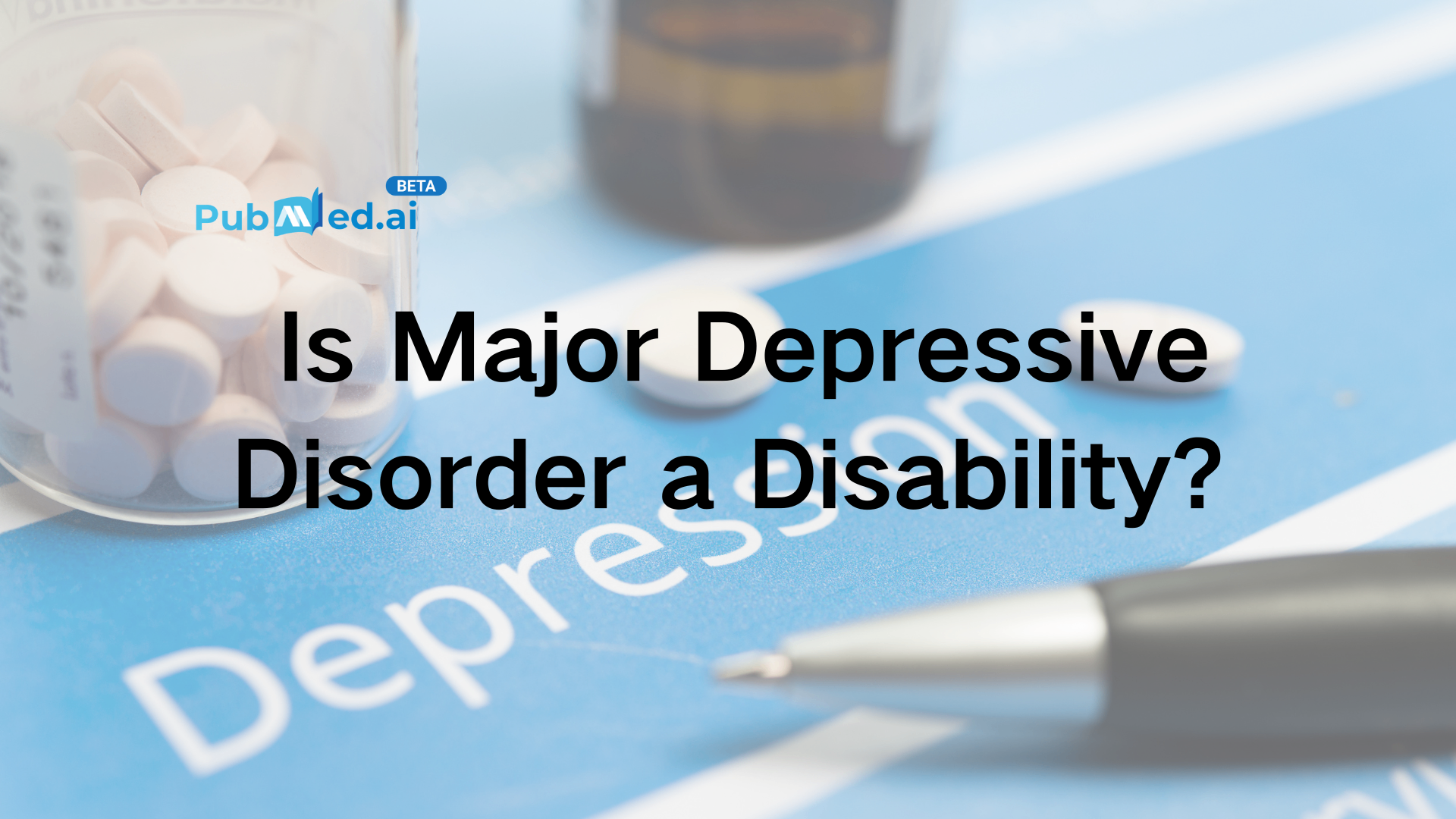
Is Major Depressive Disorder a Disability?

Major depressive disorder (MDD) is considered a disability when it significantly limits an individual’s ability to perform major life activities, including work, social functioning, and self-care. According to both the Social Security Administration (SSA) and the Americans with Disabilities Act (ADA), MDD may qualify as a disability if it meets functional impairment criteria. Severe, recurrent, or chronic depressive episodes often result in disability determinations, particularly when supported by thorough medical documentation and functional assessments. For authoritative information, see the National Institute of Mental Health (NIMH) on Depression.
What Criteria Does the Social Security Administration Use to Define Disability for MDD?
The SSA evaluates mental disorders under criteria outlined in the Blue Book. Disability for MDD is assessed based on three key domains:
- Severity of Symptoms: Persistent depressed mood, diminished interest or pleasure, fatigue, and cognitive impairment.
- Duration: Symptoms must persist or be expected to persist for at least 12 months.
- Functional Limitations: Impairment in work-related tasks, self-care, or social interactions.
Functional impairment is central. SSA requires that depressive symptoms substantially restrict an individual’s ability to perform routine work tasks. Research indicates that recurrent depressive episodes or severe MDD frequently meet these thresholds, particularly when supported by structured psychiatric assessments and longitudinal records. For clinical reference, consult the DSM-5 diagnostic criteria for MDD.
It is worth noting that the SSA employs a “listing evaluation” methodology. If an applicant’s symptoms match or exceed the severity criteria in the Blue Book, they may qualify for automatic approval. Otherwise, SSA uses a residual functional capacity (RFC) assessment to evaluate limitations on a case-by-case basis.
How Does the ADA Define Disability in Relation to Major Depressive Disorder?
The ADA defines a disability as a physical or mental impairment that substantially limits one or more major life activities, including work, learning, and daily tasks. Major depressive disorder can qualify if symptoms interfere with cognitive functioning, concentration, or workplace productivity.
Unlike SSA evaluations, the ADA emphasizes real-world impact rather than strictly medical documentation. For instance, employees with MDD may request reasonable accommodations, such as flexible work hours, telecommuting, or modified workloads. The U.S. Equal Employment Opportunity Commission (EEOC) provides guidance on such accommodations, highlighting employer responsibilities and employee rights.
Moreover, ADA protection is forward-looking: it applies not only to current impairment but also to conditions that may episodically affect functioning. This is particularly relevant for recurrent MDD, where symptom severity fluctuates over time.
What Are the Differences Between Severe, Recurrent, and Permanent MDD in Disability Evaluations?
- Severe MDD: Characterized by intense depressive episodes that prevent the individual from performing essential work or daily activities. Symptoms may include psychomotor retardation, profound fatigue, suicidal ideation, or severe cognitive impairment.
- Recurrent MDD: Involves multiple depressive episodes separated by periods of remission. Recurrent MDD may cumulatively affect long-term occupational and social functioning.
- Permanent MDD: Chronic, long-lasting impairment that persists despite appropriate treatment. Permanent MDD is more likely to qualify for long-term disability benefits.
How Are Disability Ratings Assigned for Major Depressive Disorder?
The SSA does not assign a numerical rating as in other disability systems. Instead, eligibility is determined through qualitative assessments:
- Concentration, persistence, and pace: Limitations in focusing, completing tasks, or maintaining productivity.
- Social interaction: Difficulty maintaining relationships or functioning in team-based environments.
- Adaptive functioning: Challenges in self-care, daily planning, and independent living.
Benefits are generally categorized as SSDI or SSI, which provide monthly support based on prior earnings and disability status. Applicants with recurrent or severe MDD often qualify, particularly when documented evidence demonstrates substantial functional impairment. For further exploration, see Cognitive-Behavioral Therapy for General Anxiety Disorder for related interventions affecting functional outcomes.
How Can Individuals Apply for Disability Benefits Due to Depression?
Applying for disability requires a structured, evidence-based approach:
- Comprehensive medical documentation: Psychiatric evaluations, therapy notes, and medication history.
- Functional evidence: Statements from healthcare providers about the impact on work, self-care, and social functioning.
- Consistency: Records showing persistent symptoms over time.
Applicants should clearly document recurrent and severe episodes, providing objective evidence such as standardized assessment scores, hospitalizations, or detailed progress notes.
FAQs
Is major depressive disorder a disability under the ADA?
Yes, if it substantially limits major life activities, including work, learning, or daily functioning.
How is MDD disability evaluated by SSA?
SSA evaluates severity, duration, and functional impairment using Blue Book criteria.
What qualifies as severe MDD for disability purposes?
Symptoms that significantly disrupt work, social, or self-care activities.
How long can someone remain on SSDI for depression?
As long as medical evidence demonstrates ongoing functional impairment.
How can someone apply for disability for depression and anxiety?
Through comprehensive documentation of symptoms, functional limitations, and treatment history.
Recommended Reading and PubMed.ai Resources
For additional research and evidence-based insights, visit PubMed.ai and use PubMed.ai Search. Related articles include:
- OCD vs OCPD
- Cognitive Behavioral Therapy for Executive Dysfunction
- Cognitive-Behavioral Therapy for General Anxiety Disorder
- Current Limitations of Neuropsychological Testing
Disclaimer:
The content in this article is for informational and educational purposes only. It is not intended to provide medical advice, diagnosis, or treatment. Always consult qualified healthcare professionals regarding any medical condition or treatment decisions.

Have a question about medical research, clinical practice, or evidence-based treatment? Access authoritative, real-time insights: PubMed.ai is an AI-Powered Medical Research Assistant.
Your AI Medical Update
Subscribe to our free Newsletter